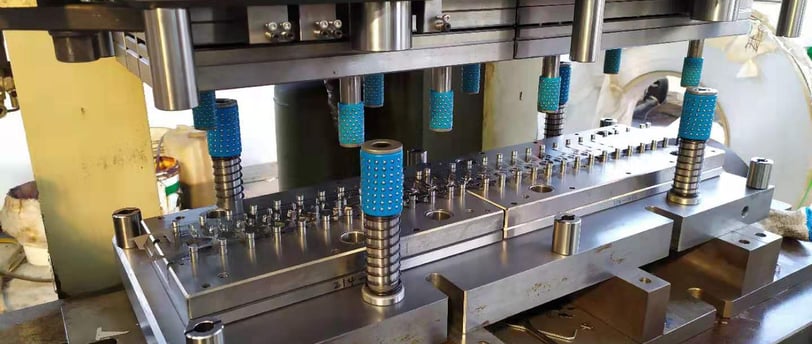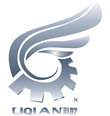How to Improve the Production Automation Level of Stamping Die
2/13/2025


Understanding Stamping Die Production Automation
Stamping die production is a critical aspect of manufacturing industries, particularly those focused on metal fabrication. Stamping dies are tools used to shape and cut materials, primarily metals, into specific forms and sizes applicable for various products. The production process traditionally relies on manual labor and mechanical stamping machines, which can lead to variability in quality and efficiency. As the demand for precision and speed has increased, the role of automation in stamping die production has become increasingly significant.
Automation refers to the use of control systems, such as computers or robots, to enhance manufacturing processes, thereby improving efficiency, safety, and precision. In the context of stamping die production, automation can effectively minimize human error, reduce cycle times, and ensure consistency across large volumes of production. Employing automated systems in stamping die manufacturing not only accelerates the production process but also enhances the precision and repeatability of the stamping operations.
There are various automation technologies that are transforming the stamping die industry. Examples include computer numerical control (CNC) machines, robotic arms, and advanced software designed for monitoring and optimizing production lines. These technologies allow for complex designs and adaptations in real-time, ensuring that production can respond swiftly to changes in demand or design specifications. Moreover, automation enables better resource allocation, reducing waste and improving overall process efficiency.
The advantages of adopting automation in stamping die production are substantial. Beyond the improvements in speed and quality, automation often leads to increased operator safety and reduced labor costs. As automation technologies continue to evolve, their integration into stamping die production not only impacts the manufacturing process itself but also elevates the industry standards for quality and efficiency.
Assessing Current Production Processes
To enhance the production automation level of stamping die, an essential first step involves a comprehensive assessment of current production processes. This analysis serves as a foundation for identifying inefficiencies and areas for improvement. An initial focus should be on evaluating existing machinery, where operators must consider the functionality, age, and compatibility of equipment with automated solutions. Inspection records and maintenance logs can provide valuable insights into the operational capabilities and limitations, revealing whether upgrades or replacements are necessary.
Next, assessing workflow efficiency is critical. Observing the flow of materials and tasks among various stages of production can uncover delays or interruptions caused by manual operations. It is essential to map out the entire process from the initiation of a job to the final product. This visual representation enables the identification of any bottlenecks or redundancies, which may suggest that certain operations could benefit from automation.
Additionally, it is vital to evaluate the balance between manual and automated operations. Some processes may inherently require human intervention, while others stand to gain significantly from automation. A careful analysis that weighs the complexities of each process against the potential benefits of automating specific tasks can lead to informed decision-making. Furthermore, reviewing quality control measures provides insight into defect rates and rework needs. Effective quality controls can determine the reliability of both manual and automated processes, shedding light on the necessity for improved automation.
Using various assessment tools and metrics, such as OEE (Overall Equipment Effectiveness) or Fishbone diagrams, can provide structured approaches to perform this evaluation. By pinpointing specific bottlenecks and inefficiencies within the existing setup, manufacturers will be better equipped to propose targeted enhancements, ultimately driving the automation of stamping die production to new heights.
Implementing Automation Technologies
In today's rapidly evolving manufacturing landscape, integrating automation technologies into stamping die production systems is both a strategic necessity and a significant opportunity to enhance operational efficiency. Various automation solutions can help streamline processes, reduce human error, and ultimately improve production capability. Some of the most prominent technologies being adopted include robotics, CNC machines, IoT devices, and AI-driven systems.
Robotics, for instance, represents one of the most transformative changes in stamping die production. Robots can handle tasks that range from material handling to intricate assembly operations, thereby reducing cycle times and the likelihood of accidents. The initial investment in robotic systems can be substantial; however, factories often witness significant returns on this investment through improved speed and consistency in production workflows.
CNC (Computer Numerical Control) machines also play an essential role in automating stamping die production. These machines boast high precision, allowing for complex shapes and fine detailing that manual operations may struggle to achieve. As operators can program these machines for various tasks, they facilitate flexibility in the production process, accommodating different production runs without the need for extensive downtime.
The introduction of IoT devices adds another layer of sophistication by enabling real-time monitoring and data collection. This connectivity allows for tighter control over production parameters, leading to better quality assurance and proactive maintenance measures. Identifying bottlenecks in real-time can significantly optimize production flows, and the data gathered can inform future investments in automation.
Lastly, AI-driven systems enhance decision-making processes through intelligent analytics, predicting maintenance needs and optimizing schedules based on historical data. While selecting the appropriate technology requires careful consideration of specific production needs and budget constraints, the potential benefits associated with these automation technologies merit a thoughtful investment. In summary, evaluating the right mix of these technologies is essential to advance stamping die production and capitalize on the efficiencies brought by automation.
Monitoring and Continuous Improvement
In the quest for enhanced production automation in stamping die processes, a systematic approach to monitoring and continuous improvement is vital. Establishing key performance indicators (KPIs) is foundational in evaluating the effectiveness of automation strategies. These metrics, such as cycle time, production yield, defect rates, and equipment downtime, provide quantifiable data that reflects the performance of the automation processes. By regularly tracking these KPIs, manufacturers can gain insights into operational efficiency and identify areas where improvements may be necessary.
Moreover, a proactive maintenance strategy plays a crucial role in ensuring that automated systems operate at peak performance. Regularly scheduled maintenance, predictive maintenance through data analytics, and timely repairs can significantly reduce unexpected downtimes, ultimately enhancing overall productivity. Implementing a maintenance management system that tracks equipment performance and maintenance history enables operators to make informed decisions that align with production goals.
In addition to metrics and maintenance, gathering feedback from operators who interact directly with the automation systems is essential. Their insights can lead to practical improvements and highlight issues that may not be captured by quantitative data alone. Techniques such as surveys, suggestion boxes, and structured feedback sessions can facilitate dialogue between operators and management, driving a culture of open communication.
Central to the philosophy of continuous improvement, or Kaizen, is the idea that small, incremental enhancements can lead to significant overall advancements in production automation. This methodology encourages teams to regularly assess their processes, experiment with new techniques, and embrace changes that contribute to higher efficiency. By fostering a culture of innovation, organizations can create an environment where employees actively participate in transforming their workplace through ongoing learning and adaptation.
